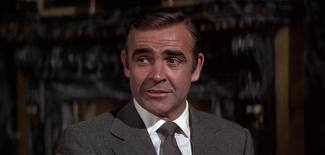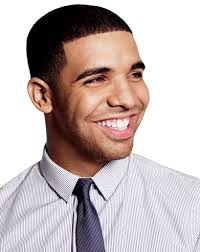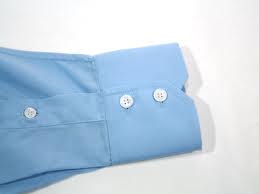At first glance, when assessing shirts, it appears as easy as choosing between buying Sports Illustrated covers that feature Queen Latifah or Eva Mendes. Easy decisions (depending on your preferences). Until you realize that the devil is in the details. Choosing a shirt, bespoke or not, requires attention to detail that can really help accentuate your ensemble the next time you are strutting your sartorially inclined outfit at work. Below are some of the details that really matter. Details, that if overlooked, can leave you looking more like Craig Sager and less like Daniel Craig. Pick your Craig.
The Collar
The collar is one of the formal shirt’s more prominent features, and unless you’re travelling the road less travelled – that by Craig Sager, is an item not to be overlooked. In addition to indicating the formality level of a shirt, the fact that collars are almost eye level ensure that it is an item not to be neglected.
Point Collar
The Point Collar, is a man’s wardrobe staple. Cut using straight lines and with a relatively small spread, it is most associated with the traditional men’s dress shirt. The point collar shirt exhibits a great level of sophistication, while at the same time allowing the buyer to retain a level of casualness if need be. This adaptable collar means that it’s suitable for sartorial rookies (without sounding pomp) and bespoke regulars alike. Hence, the flexibility one affords you to don the shirt with or without a tie.
If you do decide to strut your latest neckwear with a point collared shirt, a four-in-hand is probably your best option. As mentioned in our earlier article on dressing up based on your body type, a pointed collar shirt will work best if you are of a shorter or heavier frame, as it will help to visually elongate your torso. Hence, the four in hand knot will also detract from roundedness in facial features and help with overall perceived slimness. Generally speaking, opting for shirts and suits that ‘slim’ you down are preferable for shorter men or heavier men, whiles opting for shirts and suits that ‘broaden’ your shoulders, chest and torso are suggested for taller and slimmer men.
Spread Collar
The Spread Collar, known as the cutaway or Windsor collar, comes in various widths and angles, revealing more of the upper shirt or tie than the point collar. Due to the distance between the collar points (some are almost horizontal), the spread collar is generally worn with a tie and is reserved for business / formal dress only. Gaining popularity in recent years, the spread collar’s width compliments those with a slim build by balancing the body’s perceived length.

A spread collar shirt with a half or full windsor knot can add to perceived width and look extremely elegant!
Button Down Collar
The button down collar is attached directly to the shirt body with two small buttons, and is generally considered a no-go for tie wearers! Button down collar shirts are a perfect fit for chinos or khakis. They are also good for a business casual environment, and can most definitely be worn with a pair of slacks.
Cuffs
Sometime (blasphemous!) overlooked, the shirt cuffs are one of the few features that are visible when worn with a suit jacket (as stated in an earlier article, cuffs should ideally be exposed by ¼ inch or so when wearing a suit). An effective cuff choice demonstrates a keen eye for detail and completes a polished and perfectly proportioned appearance.
Barrel Cuff
The button cuff is the traditional and most popular cuff type and the basic single button style is commonly seen in high street menswear stores. Consisting of a single cuff that wraps around the wrist and buttons into place, this option can offer square, rounded or angled corners. Shirts with barrel cuffs also come with an extra button between the cuff and cuff opening, allowing for a better fit around the forearm.
French Cuff
The classic dress shirt folds back around the wrist and is fastened by cufflinks rather than buttons. While most men are not going to have a wardrobe flooded with French cuff shirts, it is worth having at least one French cuff shirt for more formal occasions, as it does provide the perfect polish to a great suit and cravat.
Material and Fit
As per the Art of Fabrication, Broadcloth / Poplin is the most widely used fabric for dress shirts. The simple over and under weave provides a smooth and formal shirting experience. For a more elaborate, textured, heavier shirt, twill, with a diagonal weave, is more often used in checkered and herringbone shirts.
Regarding general fit, even if you are buying off the rack, it is generally good practice to know your measurements. Your neck measurement is particularly important when purchasing more formal shirts, where one finger should fit comfortably between your collar and neck. Regarding your torso, a fitted shirt is more flattering than loose cloth hanging around your mid-section.
Regarding cuffs, they should ideally be exposure by approximately a ¼ to ½ inch from your jacket.
And that’s a wrap for this one. What details do you follow before buying a formal shirt? Suggest us with more ideas of yours!
Need help with your tie shopping? Feel free to check out our Tie Starter Kits that come with a Free Style Consultation!
Feel free to check out our Entire Tie Collection here at The Dark Knot!






